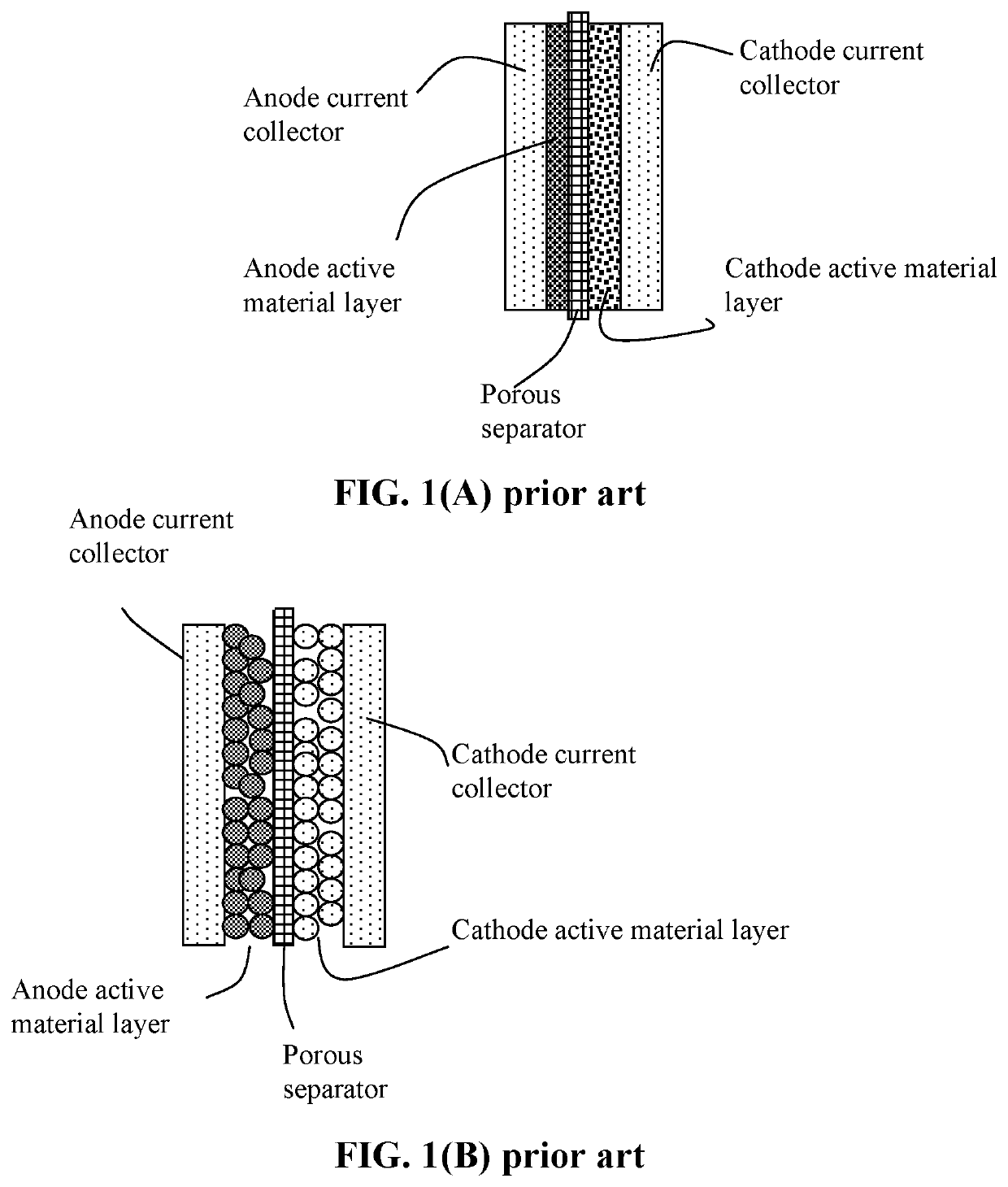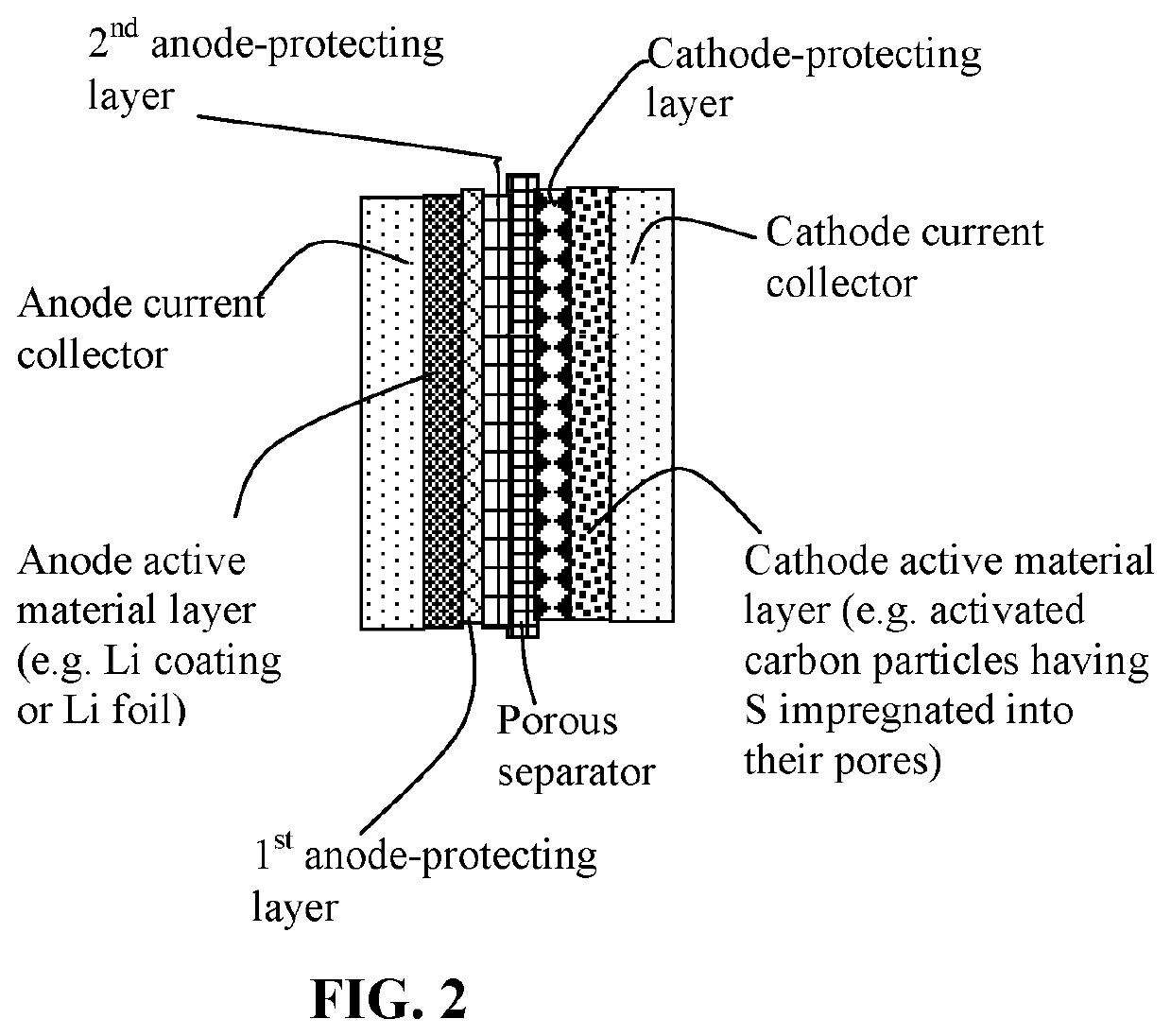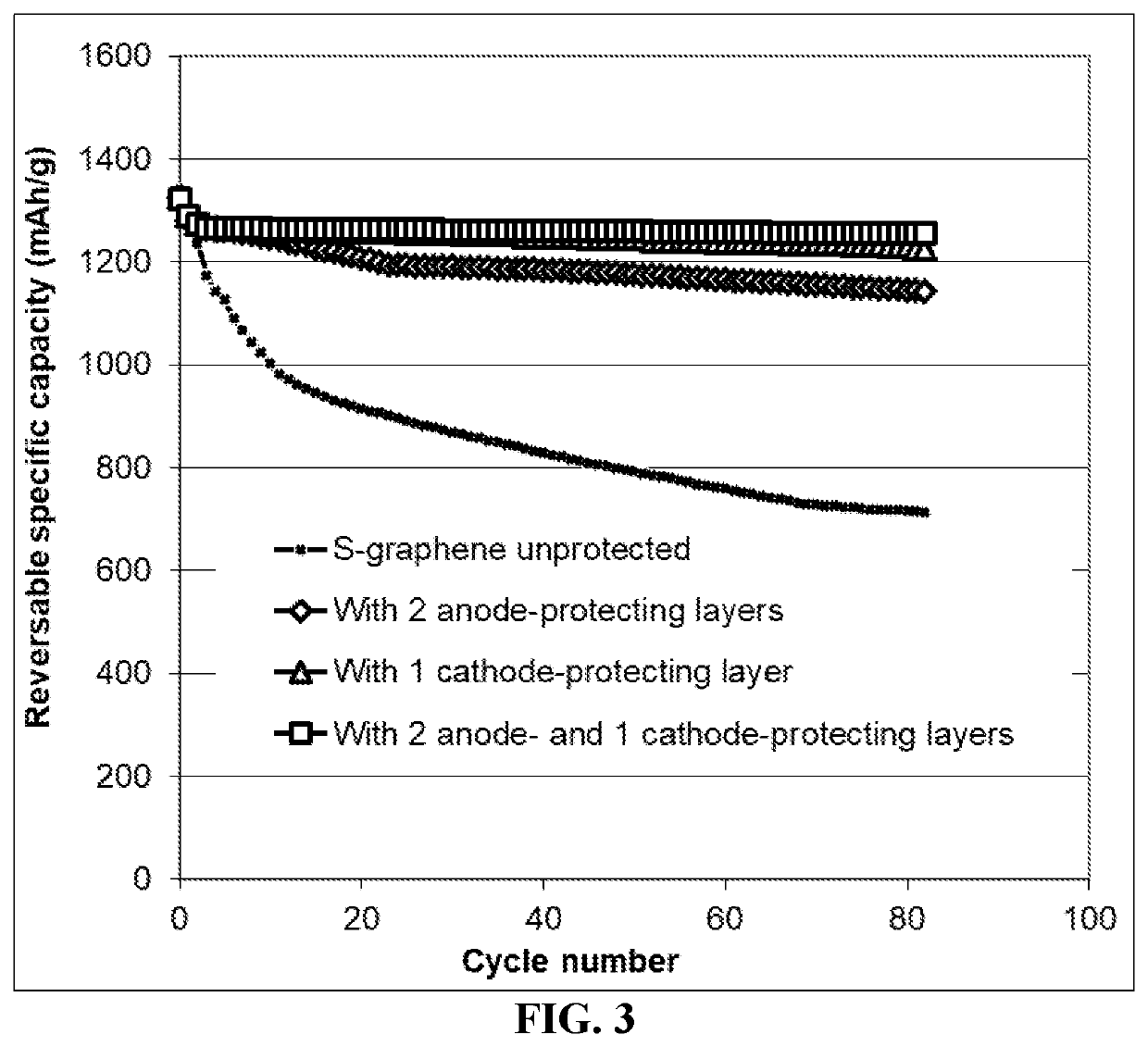Method of protecting anode of a lithium-sulfur battery
a lithium-sulfur battery and anode technology, applied in the direction of cell components, final product manufacturing, sustainable manufacturing/processing, etc., can solve the problems of dendrite formation and related internal shorting problems, dendrites have been used for this purpose, etc., to reduce internal resistance, improve contact, and reduce internal resistance
- Summary
- Abstract
- Description
- Claims
- Application Information
AI Technical Summary
Benefits of technology
Problems solved by technology
Method used
Image
Examples
example 1
Mixing of Sulfur with Carbon / Graphite Particles Via Ball-Milling to Form Sulfur-Containing Particles
[0143]Sulfur and lithium polysulfide particles and particles of soft carbon (i.e. graphitizable disordered carbon), natural graphite, mesophase carbon, expanded graphite flakes, carbon nanofibers, and graphene sheets (50% to 85% by weight of S in the resulting composite or hybrid) were physically blended and then subjected to ball milling for 2-24 hours to obtain S-containing composite particles (typically in a ball or potato shape). The particles have a typical size of 1-10 μm. These particles, along with a conductive additive (5% by wt.) and a resin binder (PVDF, 5%), were then combined and made into a layer of cathode using the well-known slurry coating procedure.
example 2
Simple Sulfur Melt or Liquid Solution Mixing
[0144]One way to combine sulfur with a conducting material (e.g. carbon / graphite particles) is to use a solution or melt mixing process. Highly porous activated carbon particles, chemically etched mesocarbon microbeads (activated MCMBs), and exfoliated graphite worms were mixed with sulfur melt at 117-120° C. (slightly above the melting point of S, 115.2° C.) for 10-60 minutes to obtain sulfur-impregnated carbon particles for use a cathode active material.
example 3
Preparation of Sulfur-Coated Graphene Sheets and their Secondary Particles (Particulates)
[0145]The step involves producing vapor of elemental sulfur, allowing deposition of S vapor on surfaces of single-layer or few-layer graphene sheets. The graphene sheets, suspended in a liquid medium (e.g. graphene oxide in water or graphene in NMP), were sprayed onto a substrate (e.g. glass surface) to form a thin layer of graphene sheets. This thin layer of graphene was then exposed to sublimation-generated physical vapor deposition. Sublimation of solid sulfur occurs at a temperature greater than 40° C., but a significant and practically useful sublimation rate typically does not occur until the temperature is above 100° C. We typically used 117-160° C. with a vapor deposition time of 10-120 minutes to deposit a thin film of sulfur on graphene surface (sulfur thickness being approximately from 1 nm to 10 nm). This thin layer of graphene having a thin film of sulfur deposited thereon was then ...
PUM
| Property | Measurement | Unit |
|---|---|---|
| specific surface area | aaaaa | aaaaa |
| thickness | aaaaa | aaaaa |
| lithium ion conductivity | aaaaa | aaaaa |
Abstract
Description
Claims
Application Information
 Login to View More
Login to View More - R&D
- Intellectual Property
- Life Sciences
- Materials
- Tech Scout
- Unparalleled Data Quality
- Higher Quality Content
- 60% Fewer Hallucinations
Browse by: Latest US Patents, China's latest patents, Technical Efficacy Thesaurus, Application Domain, Technology Topic, Popular Technical Reports.
© 2025 PatSnap. All rights reserved.Legal|Privacy policy|Modern Slavery Act Transparency Statement|Sitemap|About US| Contact US: help@patsnap.com



